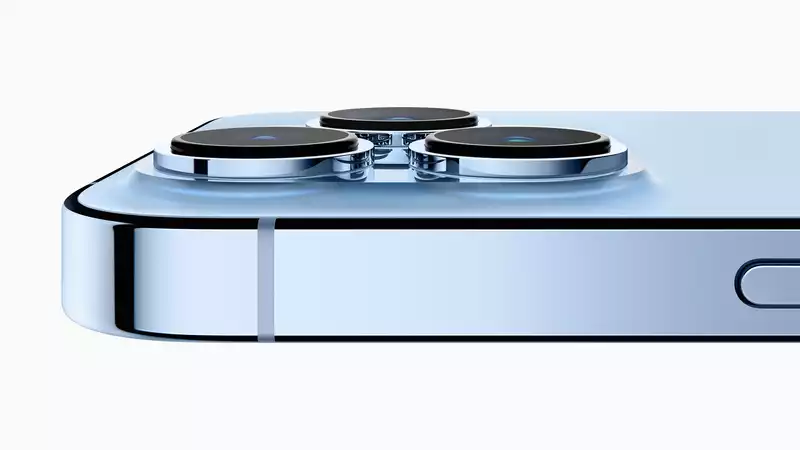Apple's announcement of the iPhone 13 revealed several new features and upgrades.
Each camera on the back of the iPhone 13 series has been refreshed, and the iPhone 13 Pro and iPhone 13 Pro Max have gotten some special tricks that are worthy of their Pro status. the most exciting news among the four new iPhones is a cinematic mode for video that automatically tracks the subject and switches focus on the fly, but there are many other new camera features and upgrades.
The A15 Bionic chipset powering the iPhone 13 series boasts a new image signal processor and a new video encoder and decoder. This will help with the iPhone's computed photography. For example, Smart HDR 4 enables images with more realistic lighting, contrast, and detail in groups and under unusual light conditions.
Apple has introduced all the new features of the iPhone 13 series camera. We invite you to see what they are and how they will make your photos and videos better than ever.
Starting with the main rear camera, Apple has increased the size of the iPhone 13 and 13 mini's pixels to 1.7 microns (μm), the same size as the iPhone 12 Pro Max's sensor. According to Apple, the larger pixels mean that more light information can be captured, up to 47% more than before, resulting in brighter, more vivid images.
The iPhone 13 Pro model has even larger pixels in the main camera, up to 1.9 µm. It is also given a new f/1.5 wide aperture to maximize the light that the sensor can capture.
Apple will also add sensor-shift image stabilization to the main camera on all models after introducing this feature on the iPhone 12 Pro Max last year. Sensor-shift image stabilization allows the sensor to move instead of the camera's lens. Overall, it makes images less blurry and videos look smoother, so its inclusion in the least expensive new iPhones is a big bonus.
The ultra-wide camera on the iPhone 13 series has a new sensor that works better in darker locations. This is related to Apple's announcement that night mode now works on all cameras, not just the main camera and the selfie camera. Now you will no longer be forced to choose between viewing your subject in low light or trying to fit everything in the frame.
In the Pro model, the ultra-wide camera has been upgraded to a six-element lens with an additional f/1.8 wide aperture. Adding more elements to the lens corrects for image distortions and aberrations that are more pronounced in ultra-wide-angle photography.
For the first time, the iPhone 13 Pro and 13 Pro Max also offer autofocus with an ultra-wide lens. As with the main sensor, it is easier to keep the camera pointed at the subject.
These upgrades also enable new macro photography capabilities on the iPhone 13 Pro models. Apple claims that it will allow users to get as close as 2 cm from a subject, which is great for those who like to capture finer details and small objects.
Both the iPhone 13 Pro and 13 Pro Max models have increased the magnification of their telephoto sensors: from 2x on the iPhone 12 Pro and 2.5x on the iPhone 12 Pro Max, both now offer up to 3x optical zoom. While this still falls short of rivals that offer 5x optical zoom and even greater magnification, it will still allow users to capture distant subjects more easily and clearly.
Smartphone videographers will be very interested in Apple's new cinematic video mode, available on all four iPhone 13 models.
In its presentation, Apple will show off some classy-looking footage and demonstrate how this mode can manage automatic cinematic-style focus racking (quick change of focus from background to foreground or vice versa), or the user's own Allow the user to lock onto a target. For the ultimate in image quality, any camera can record video in Dolby Vision HDR at up to 4K and 30 fps, which can be viewed in the preview window while recording.
You should be able to capture dramatic clips similar to what you can already capture in Photo Portrait mode.
Speaking of portrait mode, both portrait photos and cinematic mode videos can have the bokeh (background blur) level changed within the Photos or iMovie apps after each shot. This editing option will later be available in the macOS versions of iMovie and Final Cut Pro. It looks great for indecisive users who don't know which level they like best, or for methodical users who want to realize their artistic vision.
For users who really want to customize their photos, Apple has a new "Photo Styles" option accessible from the main screen of the Camera app on all four iPhone 13 models. It offers preset effects that appear in real time on the screen, essentially allowing you to find the perfect filter while shooting. If you are not satisfied with the four options Apple offers, these can be customized as well.
Another great video feature is ProRes. This is a commonly used professional-level video format that allows editors to make more drastic changes in post-production because it is more color accurate, has a lower compression ratio, and retains more metadata from the original recording. When released, it will be available on the iPhone 13 Pro and iPhone 13 Pro Max.
.









Comments